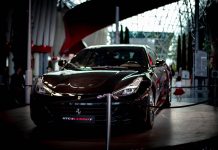
Mercedes-Benz plans to bring a newer electric version of its Smart car to the US somewhere in 2018. The gas-powered variant will eventually go out of the market as the German automaker hopes to make the EV a standard.
Mercedes’ Smart car has never sold big in the United States, in fact, only a thousand or so models left the shops last year. In Europe, the automobile has better ratings but is not a best-seller either.
Most automakers already have or are in the process of having an electric vehicle in their lineup. This trend includes hybrids of all kinds. Battery-powered no longer means ‘less powerful’ or ‘more expensive,’ but the exact opposite.
The 2018 Smart car is Mercedes’ contribution for a greener world
On Monday, the company said the electric Smart would be their next ‘dedicated focus.’ The automobile will play an ‘important role’ in the carmaker’s plans to build a fleet of eco-friendly vehicles.
The Smart lineup,” another statement read, “will consist exclusively of the zero emissions smart electric drive coupé and cabrio (convertible) in the US and Canada.” Europe will still retain the gas-powered variant for some time, other reports note.
The Smart car will have about 80 horsepower and 118 lb-ft of torque, very goods specs for its arguably small size. The electric two-seater might see some good sales in the United States but will have to face the indisputable EV giant first, Tesla.
The latter is already an established EV manufacturer and with the upcoming release of their affordable Model 3, Tesla’s market share can only go one way, up.
Nonetheless, the Smart Fortwo Electric Drive will probably garner a solid customer base with its 80-mile range and a price tag similar to that of its gas-powered predecessor, about $25,000.
Mercedes’ troubled history with the Smart car
The Smart car made his appearance in the US market back in 2008. Initial reservations amounted to about 30,000 units of both electric and non-electric models. From there, the vehicle sold an average of about 10,000 units a year.
In 2016, the company sold less than 7,000 Smart cars, but 30% of them were electric. This figure might be the reason why they decided to switch entirely to this version.
However, a public memo about the company’s decision stated that ‘developments within the micro-car segment’ were to blame for this new strategy.
As battery production goes up, prices fall. According to the Guardian, this economic trend could result in electric cars taking as much as 35% of the vehicle market share by 2035.
Source: Christian Science Monitor











